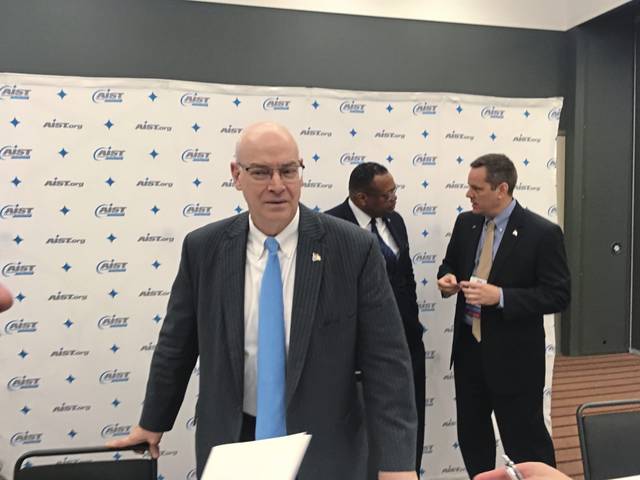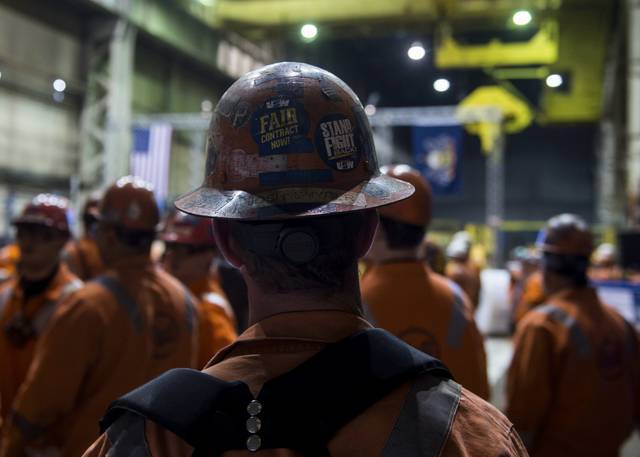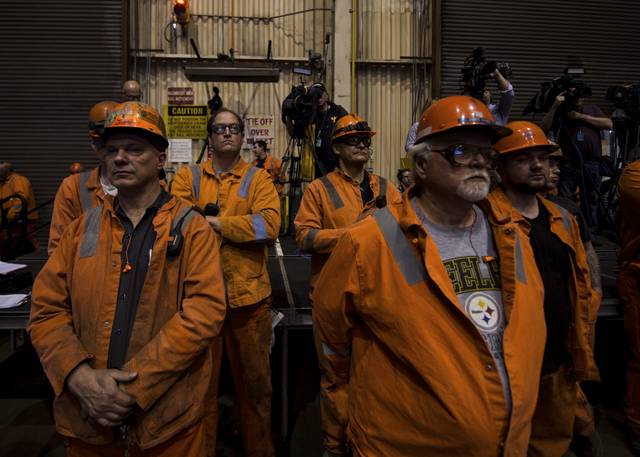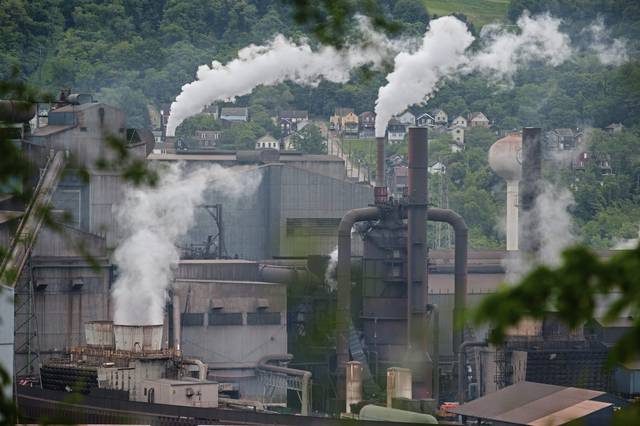Steel industry leaders see brighter future, tout tariffs at Pittsburgh conference
The American steel industry is basking in the glow of a revival sparked by technological advances and a more level playing field created by tariffs President Trump imposed last year on imported products dumped in the domestic market, industry leaders said Tuesday at a conference in Pittsburgh.
The current “golden era” for the domestic industry will continue “for the foreseeable future,” U.S. Steel Corp. CEO David Burritt said at the Association for Iron and Steel Technology conference at the David L. Lawrence Convention Center.
Tariffs on foreign steel imposed by the Trump administration shows an understanding of the strategic and important role steel plays in national security and the economy, Burritt told industry representatives. The administration understands that “if you don’t have steel, you don’t have a country,” Burritt said.
The tariffs were placed on steel (25%) and aluminum (10%) products imports beginning in June 2018 on the grounds that maintaining a strong steel industry was vital to national security. The tariffs are a step in undoing the damage of “30 years or trade wars,” Burritt said.
Some of the bump the steel industry enjoyed last year, however, likely was the result of “panic buying” by steel users, said Barbara Smith, CEO of Commercial Metals Co., of Irving, Texas.
“Some companies took on more inventory than needed,” said Smith, who previously worked for Alcoa in Pittsburgh. Still, her company has its biggest backlog of orders since the recession in 2008, Smith said.
Tax reform and regulatory certainty have played a role in reviving the industry, said Philip Bell, president of the Washington, D.C.- based Steel Manufacturers Association.
While the domestic steel industry has benefited from the tariffs, the American Institute for International Steel, a Virginia-based trade group that supports free trade, challenged Trump’s authority to impose tariffs on the grounds of national security. The organization appealed a March decision of the U.S. Court of International Trade that a prior Supreme Court ruling did not allow for a review of whether Trump violated the Constitution in bypassing Congress to regulate commerce.
Richard Chriss, president of the American Institute for International Steel, could not be reached for comment.
Burritt touted the $1.2 billion investment that U.S. Steel plans to make with an endless caster and rolling mill at its Edgar Thomson Plant in Braddock and a co-generation plant at the Clairton coke plant, capturing coke gas to use to create electricity for its Mon Valley plants, thus reducing emissions. The state-of-the-art endless caster and rolling mill will be the only one of its kind in the nation, the company has said.
Burritt trumpeted progress U.S. Steel has made in reducing emissions of sulfur dioxide and particulate into the Mon Valley’s atmosphere emission. Operating in what Burritt described as among the most stringent environmental regulations in the world, the company has cut greenhouse gas emissions by 37% since 1990. U.S. Steel has spent $831 million companywide on the environmental controls in the past three years, Burritt said.
But, U.S. Steel still faces lawsuits from environmental groups seeking to limit pollution from the Clairton coke plant. Burritt declined to comment on those lawsuits.
Joe Napsha is a TribLive reporter covering Irwin, North Huntingdon and the Norwin School District. He also writes about business issues. He grew up on Neville Island and has worked at the Trib since the early 1980s. He can be reached at jnapsha@triblive.com.
Remove the ads from your TribLIVE reading experience but still support the journalists who create the content with TribLIVE Ad-Free.




